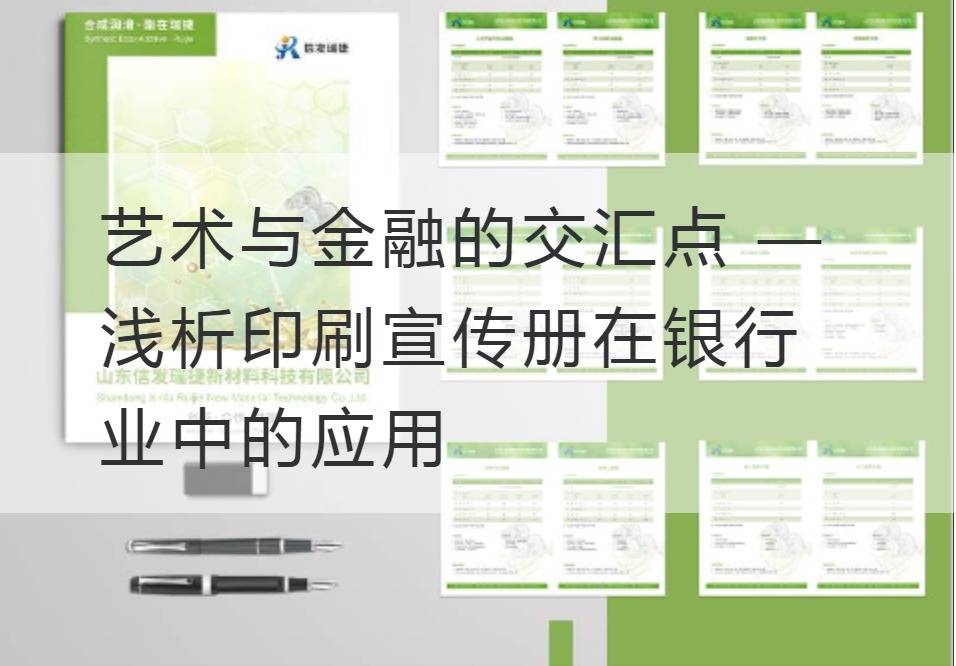The Intersection of Art and Finance--A Brief Analysis of the Application of Printed Brochure in Banking
As an important part of modern financial system, the market competition of banking industry is becoming more and more intense. In this era of information explosion, banks need to attract and retain customers in a variety of ways, and printed brochures become the place where banks meet with art. From the intersection of art and finance, this paper analyzes the application of printed brochures in banking.
First of all, printed brochures, as a major way for banks to promote external markets, need to have a sharp style of writing and glossy vocabulary to attract readers' attention and interest. It is important for the banking industry to communicate the core competencies of a company through printed brochures. For example, banks can tell customers in simple language, "We are a professional financial services organization dedicated to providing you with a full range of financial solutions that enable you to achieve your financial goals while enjoying high-quality services. This direct and accurate expression enables customers to have a sense of trust in the bank in the first place, thus promoting a better understanding of the bank's products and services.

Second, it is necessary to combine acrobatic language with professional technical parameters when writing printed brochures. Banks need to demonstrate their technical strength and innovation capabilities to customers to enhance their perception and trust in banks. By using technical terms and technical parameters such as "intelligent risk assessment systems" and "blockchain technology", banks can demonstrate their high-tech financial capabilities to customers. At the same time, the use of modern words to replace the traditional boring jargon can better arouse the reader's resonance and interest. For example, we could replace the previous rate growth rate with "500 times 272 is not just the growth of your deposits, but the speed at which our banks let your wealth soar".
Third, a good printed brochure needs to be infectious and resonate with the reader in the process. Banks need to use attractive words to make customers feel empathetic and feel good about the bank, which needs to be good at using emotional techniques. Banks can demonstrate their love and care for customers. "As your financial partner, we will always pay attention to your financial needs and dreams and protect them with the most thoughtful services." Such expressions can not only make customers feel the warmth of the bank, but also make them trust and identify with the bank.
Finally, in order to enhance the appeal of printed brochures, appropriate colloquialization is essential. Modern people are increasingly interested in efficiency and convenience, and the dreary language of banking is hardly arousing their interest. Therefore, the use of colloquial expression can better communicate with readers emotionally. For example, with "wealth at your fingertips, innovation builds the future" to induce readers to invest, let them feel the charm of banks.
To sum up, art and finance inPrinted BrochureThe intersection in is an important part of the banking industry's efforts to attract customers and promote itself. When drafting brochures, banks need to use sharp writing style, gorgeous vocabulary, professional terms and technical parameters, and powerful colloquial expressions to demonstrate their strength and charm and impress customers. Only in this way can banks stand out in the market competition and achieve better performance.
Recommended Reading:
Placing skills: Make creative catalog design better
The Art of Placing in the Design of Commercial Catalogues: Connecting Aesthetics and Practicality
The Importance of Placing from the Design of Propaganda Catalogue
Catalog design: Demonstrate brand appeal through product range



